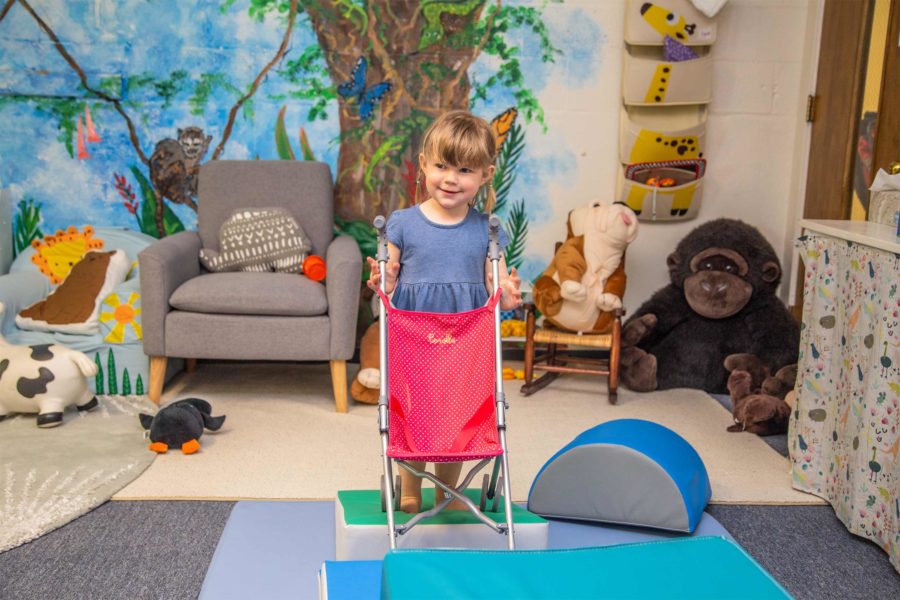If it were entirely up to you, you’d spend all day rolling around on a play mat with your toddler and stacking blocks or reading books and making funny faces. At nap time, you’d slump on the couch and sleep yourself, or perhaps enjoy a quiet moment and a cup of coffee.
But, really, is that life? Duh duh da, there are those e-mails to be answered, laundry to do and a looming work deadline.
Cecilia Matson, a specialist in child development and parenting, and a mother herself, knows as well as anyone how hard it can be to fit playtime with your toddler into an insane day.

Courtesy of Cecilia Matson
Cecilia Matson, owner and creator of Galoop in Chestnut Hill.
Matson recently created and opened Galoop, a unique, Chestnut Hill-based space and “nurturing environment,” where caregivers and children can unwind and enjoy themselves together. Kids can jump from arts and crafts to sensory play to reading to climbing. There is a bilingual environment complete with English and Spanish story time — Matson is originally from Argentina. Parents can enjoy a cup of tea while chatting with other caregivers. The best part: Galoop is a drop-in model, so you never have to worry about missing the window.
Since she’s the expert, we sat down with Matson to pick her brain on how moms can fit in quality playtime in at home, where the pressure for undivided attention is high. “Don’t feel guilty,” she says. “We’re all doing the best we can.”
Playtime is Good for Everyone — So Make the Most of It
Tip 1: Build a Routine
Matson says kids thrive with structure and a consistent schedule. Building playtime into a regular routine is key. It doesn’t have to be much, 10-15 minutes in the morning or the evening can make a huge difference. But, it has to be consistent.
It’s also important to set a specific start and end time so that your child knows they can count on you for a certain slot, rather than never knowing when the fun will be cut short. Matson recommends setting a timer or playing music and setting the expectation that when the music stops the play is over.
Tip 2: Eliminate Distractions
When you have limited time available, it’s essential to focus solely on your child during those minutes.
It can be hard not to be thinking about what to make for dinner, whether you brought that brief home from the office, or if you’re going to hit traffic. But, it makes a world of difference for your child to know they have your undivided attention during this time.
Tip 3: Incorporate Kids Into Everyday Life
If your child is interested (and only if interested, because these aren’t chores) allow them to participate in the everyday activities of the house.
For example, give your child a washcloth to fold while you’re putting laundry away or allow them to sit or stand with you while you cook, with safety in mind, of course.
This way you can knock things off your to-do list while also spending time with your baby. And, your child will feel trusted and important to be able to participate in these areas of your life.
Tip 4: Let Them Take the Reins
According to Matson, some of the most productive play is when you let your child lead playtime.
For this kind of focused play, it’s best to spend it one-on-one with just one child, perhaps while siblings are involved in other activities. Let your toddler make the decisions about what they want to do and how and follow their lead.
This is a great way to make the most of short spurts of play, but don’t utilize screens or books (as much as we love books).
Tip 5: Be Honest
There are going to be times when your child wants attention and you don’t have time to play. As torturous as it is to have to say no, Matson says the best option is to be honest with them. Tell them that you understand they want to cuddle or go outside or play with blocks, but that you have other responsibilities you need to take care of.
Remind them that you will have special play time coming up at whatever time you’ve allotted in their routine.
Taking the time to be honest with your child will make them feel like their needs are understood.



 3 min read
3 min read



